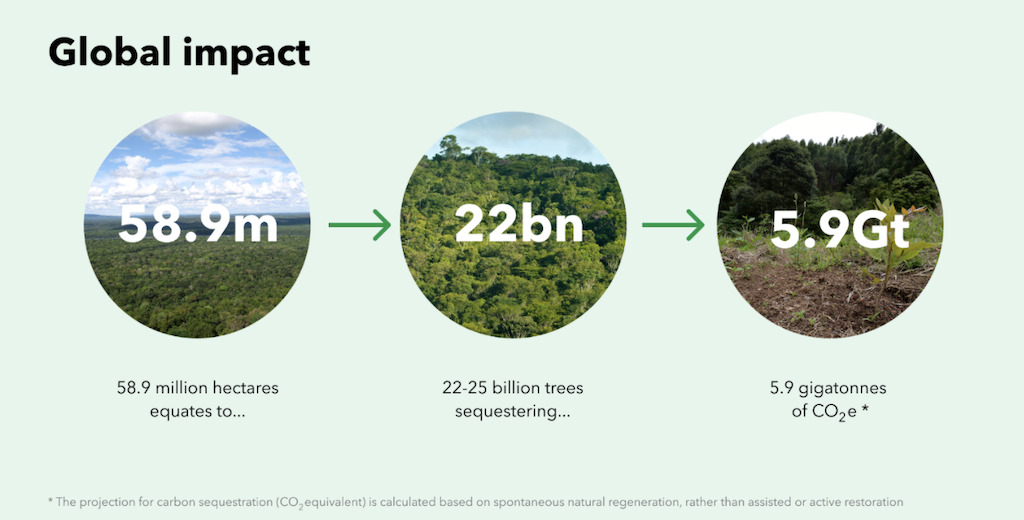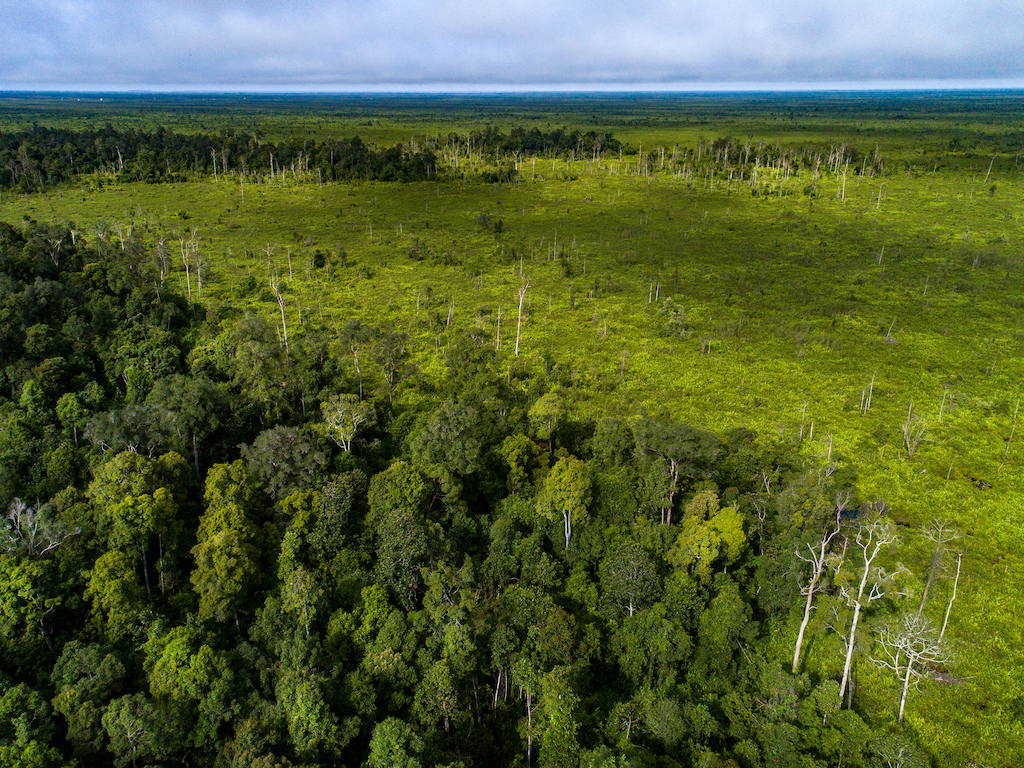4 Mins Read
Almost 59 million hectares of forests, an area that is larger than France, has been regrown over the past twenty years, scientists find in a new analysis. This area of forest bears the potential to store as much as 5.9 gigatons of carbon dioxide, demonstrating the critical importance of letting forests regenerate to protect our planet and slow down climate change.
The new study, jointly conducted by scientists at the World Wildlife Fund (WWF), BirdLife International and the Wildlife Conservation Society (WCS), finds that forests covering an area larger than mainland France have regrown since 2000. This area has the potential to store an estimated 5.9 gigatons of carbon dioxide, an amount topping U.S. annual carbon emissions.
One of the “success stories” of regeneration over the past two decades was the roughly 4.2 million hectares regrown in the Atlantic Forest in Brazil. This has been possible through a number of forest restoration projects, the greater push on responsible industry practices and a trend in migration towards cities.
Natural regeneration is different from tree-planting, and involves either leaving forests completely alone or at times giving them some assistance to regrow and recover.

Deforestation is at the centre of our climate crisis, and we must do everything we can to halt it.
Josefina Braña Varela, VP & Deputy Lead for Forests, WWF
Scientists, however, warn that while there is room for some optimism, there is far more to be done to recover the crucial biome that our planet’s forests provide. The ability of forests to sequester or store carbon is going to be critical in the fight against the climate crisis, and despite the spotlight on preserving biodiversity, deforestation continues to soar.
Last year, global deforestation rates increased by 12%. Of the 12.2 million hectares of tree cover that had been destroyed, an area equivalent to the size of the Netherlands were located in humid tropical forests, the world’s most vital resource for biodiversity and carbon storage.
“Deforestation is at the centre of our climate crisis, and we must do everything we can to halt it. The restoration of our natural forests will play an essential role in preserving these critical ecosystems,” said Josefina Braña Varela, vice president and deputy lead for forests at WWF.
“[Our] analysis provides a positive outlook for natural regeneration – but this growth doesn’t happen without careful planning, increased investment and strong policies in place that lead to an increase in forest cover.”
Outside of Brazil, progress had been made over the past two decades in several “hot spots” including Mongolia’s northern wilderness, Central Africa and the boreal forests of Canada.

This map will be a valuable tool for conservationists, policymakers and funders to better understand the multiple ways we can work to increase forest cover for the good of the planet.
John Lotspeich, Executive Director, Trillion Trees
Researchers calculated the area of forest regeneration over the joint two-year Trillion Trees project, which involved examining satellite imaging data that spanned more than 30 years, as well as surveying experts across over 100 sites in 29 countries globally.
Mapping where regeneration has been most successful is useful for future restoration projects, say the experts, as policymakers can now draw on a better understanding of natural regeneration to “rebalance their delivery plans” when it comes to conservation.
“This map will be a valuable tool for conservationists, policymakers and funders to better understand the multiple ways we can work to increase forest cover for the good of the planet,” explained John Lotspeich, executive director of Trillion Trees.
“The data show the enormous potential of natural habitats to recover when given the chance to do so. But it isn’t an excuse for any of us to wait around for it to happen. Trillion Trees…worked hard to identify and protect the areas where there is potential for natural regeneration of these precious assets and to learn from our successes to promote natural regeneration elsewhere on an even larger scale.”
Naikoa Aguilar-Amuchastegui, senior director of forest carbon science at WWF and lead of the data analysis team, says the bottom line is that there remains “a lot of additional work [that] lies ahead” to protect the world’s forests.
Lead image courtesy of Global Landscapes Forum.




